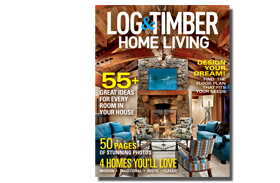Shaped Spaces
Remember how you experienced your grandparents’ house, with its sloped ceilings, irregular spaces, nooks and crannies? Houses built generations ago used all of the space for living.
Today, too often, rooms are no more than drywall boxes — no interest or character. Fortunately, log homes often have vaulted ceilings and large and small rooms. The interplay of spaces makes the house more dynamic. When you step from a small foyer into an expansive great room, you experience space with interest and surprise.
These shaped spaces enhance your sensory experience. Add wonder by making second-floor bedrooms open to the underside of the sloped roof. Dormers add light and height. Again, you create shaped spaces that are usable and exciting. Shaped spaces may also accentuate architectural style.
Gabled or shed dormers will suggest a particular architecture. When you add exposed timbers that carry the weight of the roof, the room gains appeal as you anticipate the utility of the structure. A shaped space may be subtle and intimate, as a box bay window that is used as a reading nook with great light.
Barrel-vaulted ceilings, tray ceilings, rounded banisters, art alcoves or openings in walls between rooms also shape spaces by adding light, depth and interest.
Photo: courtesy of Modern Rustic Homes / See more of this home here
















